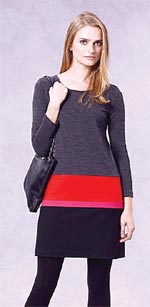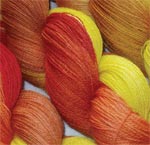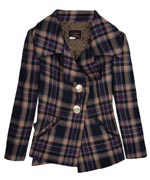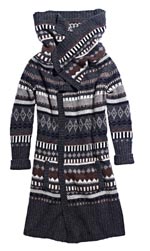Transitioning your closet from summer to fall can be a daunting task, especially if your wardrobe is extensive. However, this project doesn’t have to overwhelm if you follow three easy steps:
Step One: Prep Your Closet / Take InventoryIf you have the space in your home to move off-season clothing to a separate closet, now is the time. If you don’t have a separate closet, then simply move things to the back of your closet or on a high shelf…out of your daily sightline. As you’re packing up your shorts, tank tops and sundresses, separate what you didn’t wear this summer from the pieces you wore regularly. If the weather never got hot enough for that linen dress, revisit it next year. Write reminder notes to yourself: which items are keepers for next summer and which should “go.” Any clothes you’ve outgrown (literally or style-wise) can be consigned, so hold on to them until February or March. Donations can be taken directly to your favorite charity anytime.
Now your full attention is on your fall wardrobe. Take the time to try everything on, and look at it with a critical eye. Look for moth holes and decide to either repair or toss. Examine skirt/slack lengths and sleeves. Take clothes that need alterations to the tailor. Keep only what you love, what you intend to wear, and consider new ways to wear them.
Step Two: Research the TrendsThe September issues of fashion magazines have hundreds of pages of fall trends to choose from. What inspires you? More importantly, what are you going to steer clear of? Some trends are recurring. Animal prints are a fall staple, but this year it’s more than a basic tan/brown/black leopard print. New and exciting variations include faux fur vests and snake print accessories that can take a simple outfit out for a walk on the wild side.
Other trends for Fall 2011 include:




Color blocking (photo 1), spice colors (photo 2), brights, capes and ponchos (photo 3), menswear inspired, high-waist and flare jeans, lace, longer skirt/dress lengths, winter maxi dresses, silky blouses that tie at the neck, tweeds and plaids (photo 4), chunky knits and Navajo-inspired patterns (photo 5), high-heeled loafers and desert boots (photo 6).
Make a list of the trends that “speak” to you, then keep an eye out for them on your shopping trips. Great looks can be found any price point; I bought a fabulous brown maxi shirtdress at a discount store in August for $49.99! I’ll pair it with an animal print wide belt ($24.99) and my (leftover from last year) brown suede pumps for a super-trendy ensemble for a dinner date or a casual work event.
Step Three: Review Your CalendarBe aware of the events you’ll be attending (social functions, conventions/business trips and vacations), early in the season so you avoid “panic mode” shopping. This crazed, last minute (usually the day of an event) excursion usually results in an outfit that is “fine” at best. Know the schedule, so you can look and feel your best.
Finally, organizing your wardrobe takes effort. If you manage it seasonally, it won’t overwhelm you, and you’ll have outfits you love ready to wear to for any occasion for years to come.
If you have a style question, email Carolyn at Carolyn@C2Style.com, and she may answer it in an upcoming Alive article.
Note: Keep what you love and donate or consign the rest. Consignment stores are plentiful up and down the 680 corridor. Find one in your neighborhood, and “recycle” the items that are in good condition and current in style, but are just no longer “you.” Great clothes can be found at consignment stores. Remember, it’s not new, but it’s new to you.
Keep from previous seasons: Animal print.





